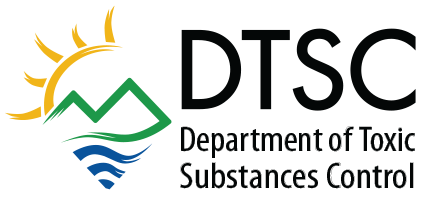DTSC PCBs in Schools Voluntary Lighting Retrofits Can Address Hidden Dangers and Liabilities Fact Sheet
Introduction
The Department of Toxic Substances Control (DTSC) has recently been called upon to assist several school districts where leaking polychlorinated biphenyls (PCBs) from light ballasts were found in classrooms. PCBs are hazardous to people and the environment. As a result, DTSC recommends school districts take preventative action by voluntarily surveying, inventorying and retrofitting all fluorescent light fixtures that may contain PCBs. Removal and disposal of light fixtures that contain PCBs, in conjunction with lighting upgrades, is an investment that pays off by preventing exposure to hazardous materials, saving energy, and reducing liability for school districts.
What are PCBs?
PCBs are man-made chemicals formerly used as coolants and lubricants in transformers, capacitors, and other electrical equipment. PCBs are very stable chemicals with low water solubility, low flammability, low electrical conductivity, and a high boiling point. In 1978, PCB production was banned in the U.S. because evidence showed that PCBs accumulate in the environment and may cause harmful health effects. The U.S. Environmental Protection Agency (U.S. EPA) concluded that PCBs are probable human carcinogens. A conservative approach to PCBs is recommended to minimize the possibility of exposure. For more information about PCB hazards, please refer to the U.S. EPA’s Learn about Polychlorinated Biphenyls (PCBs) (opens a new window) web page or the Agency for Toxic Substances & Disease Registry’s PCB (opens new window) web page.
School districts are responsible for ensuring that personnel who perform PCB work (e.g., inspecting light ballasts, cleaning up PCB leaks) follow the most current Occupational Safety and Health Administration (OSHA) regulations, as well as other applicable federal, state and local laws and regulations.
Emergency Response for PCB Release
If a PCB ballast leak or ballast fire is discovered:
- Evacuate the room or area immediately to prevent exposure
- Call 911 for an appropriate local emergency response team
- Fence off the impacted area
- Notify appropriate local and state authorities including DTSC
- Within 24 hours of discovery, hire an experienced contractor to manage the cleanup and prevent further leaking
Lighting Retrofit Management
DTSC recommends that school districts evaluate light fixtures during routine maintenance to determine the condition of the ballasts and to establish an inventory of all identified PCB ballasts. At a minimum, a visual inspection of a representative number of light fixtures is recommended for schools built before 1985 to determine the presence of PCB ballasts.
Funding Resources for School Lighting Retrofits
State Programs: Lighting retrofits may be included in school modernization projects funded by the Department of Education. The California Energy Commission’s Bright Schools Program provides free energy audits and studies, low-interest rate loans for lighting retrofits, and other energy saving projects. See the California Energy Commission’s Bright Schools Program (opens new window) web page or call (855) 380-8722. The Department of General Services also provides similar services. See their Access Modernization Funding for Schools (opens new window) web page or call (916) 376-1771.
Federal Programs: U.S. EPA’s Energy Star Program (opens new window) offers assistance with installation of energy-efficient lighting technologies.
Energy Providers: DTSC recommends that school districts contact their energy providers, since many energy companies offer incentive programs to support lighting upgrades.
For More Information
The following two PCB publications may be requested by telephone at (800) 490-9198: “Guide for School Administrators – Removing PCBs from Light Fixtures: Protecting Students from Hidden Dangers, EPA 909B-00-003” and “Guide for School Maintenance Personnel – Removing PCBs from Light Fixtures: Protecting Students from Hidden Dangers, EPA 909B-00-002.”
Additional information about managing PCB-ballasts is available on the U.S. EPA’s Policy and Guidance for Polychlorinated Biphenyl (PCBs) (opens new window) web pages. For more information about the use, storage, transportation, and disposal of PCBs, please contact the DTSC’s Toxic Substances Control Act Hotline at (202) 554-1404 or contact:
Shahir Haddad, Unit Chief
Southern California Schools
Department of Toxic Substances Control
(714) 484-5368
Shahir.Haddad@dtsc.ca.gov
Site Mitigation & Restoration Program Links
- Brownfields
- Cleanup in Vulnerable Communities Initiative (CVCI)
- EnviroStor
- Exide
- Human and Ecological Risk Office
- Lead-Acid Battery Recycling Facility Investigation and Cleanup Program
- Loans & Grants
- Land Use Restriction Sites
- Santa Susana Field Laboratory
- School Sites
- Sea Level Rise
- State Superfund Program
- Strategic Plan and Program Enhancement Work Plan
- Vapor Intrusion
- Contact Information
Site Mitigation & Restoration Program Related Links
Connect / Contact Us
Office Locations / Map
Sign up for an E-List
Regulatory Assistance Officers
Statewide Campaigns/Alerts
Report an Environmental Concern
Amber Alert
California Grants Portal
Register to Vote
Save Our Water.com



 Katherine M. Butler, MPH
Katherine M. Butler, MPH